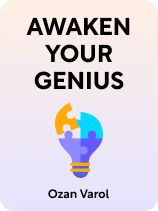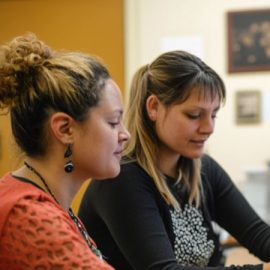

This article is an excerpt from the Shortform book guide to "Awaken Your Genius" by Ozan Varol. Shortform has the world's best summaries and analyses of books you should be reading.
Like this article? Sign up for a free trial here.
How do you spark creativity when you’re feeling stuck? What’s the secret to generating fresh, innovative ideas?
Ozan Varol’s book Awaken Your Genius offers insights on how to come up with original ideas. He shares practical tips for tapping into your creative potential and developing innovative concepts. These strategies can help you break through mental blocks and explore new possibilities.
Keep reading to tap into your creative genius and discover ways to generate groundbreaking ideas.
Coming Up With Original Ideas
Once you’ve returned to your true self, Varol says you’ll have new opportunities for creative fulfillment. Creativity requires original ideas. Varol’s book includes his advice for how to come up with original ideas. Let’s look at three of his tips.
#1: Make Time for Contemplation
Varol argues that the ideas that come to you most quickly tend to be conventional, not innovative. Spending time in contemplation allows you to explore less obvious connections and possibilities, which can help you develop truly original ideas.
(Shortform note: Some people think best when they’re writing. If that applies to you, consider using what artist Julia Cameron calls “morning pages” as a form of contemplative practice. In The Artist’s Way, Cameron explains that writing morning pages—a three-page brain dump written as soon as you wake—helps you process your thoughts and feelings and connects you to your inner artist.)
#2: Use Your Body to Think
Most people conceive of thinking as a purely mental process, but Varol argues that you can use your body to come up with original ideas: Studies suggest that movement can stimulate creativity, and you can also tap into your body’s wisdom to evaluate your ideas. For example, if the thought of pursuing a particular idea makes you feel physically energized and excited, it’s likely a good direction to follow. Conversely, if an idea makes you feel tense or uneasy, it might be worth reconsidering.
(Shortform note: In addition to the two benefits of movement Varol identifies, movement can support creative thinking in another way—by keeping your brain healthy. In her book Move, science journalist Caroline Williams argues that our brains evolved to support movement, so staying active keeps cognitive functions sharp. Physical activity sends signals to the brain that improve mood, reduce anxiety and depression, and boost self-esteem. These emotional benefits create an optimal environment for creative thinking. Movement also increases dopamine and serotonin levels—neurotransmitters linked to creativity—which can help you overcome inflexible thinking.)
#3: Seek Others’ Opinions
Varol says that most great ideas aren’t developed in isolation. Getting feedback on your ideas from people whose thinking you respect can provide valuable insights and perspectives you may have missed. Additionally, someone else might have expertise that enhances or completes your idea. For example, if you come up with an idea for a new mental health app, you might benefit from collaborating with a software developer who can turn your concept into a functional product.
(Shortform note: In Thanks for the Feedback, Douglas Stone and Sheila Heen offer some best practices for receiving and implementing feedback on your ideas. First, they recommend understanding your triggers, which can cause you to dismiss or push back against valuable feedback. For example, identity triggers can make you feel as if someone’s attacking or challenging who you are, which might lead you to reject their feedback even if it’s useful. Stone and Heen also recommend asking for one piece of specific feedback at a time, since that’s easier to implement than vague, all-encompassing feedback. For example, if you’re designing a new mental health app, you might ask your team for feedback on how easy the app is to use.)

———End of Preview———
Like what you just read? Read the rest of the world's best book summary and analysis of Ozan Varol's "Awaken Your Genius" at Shortform.
Here's what you'll find in our full Awaken Your Genius summary:
- The reasons why you’ve abandoned your true self so far in life
- A former rocket scientist’s tips for embodying your true self
- How to achieve creative fulfillment and personal growth






